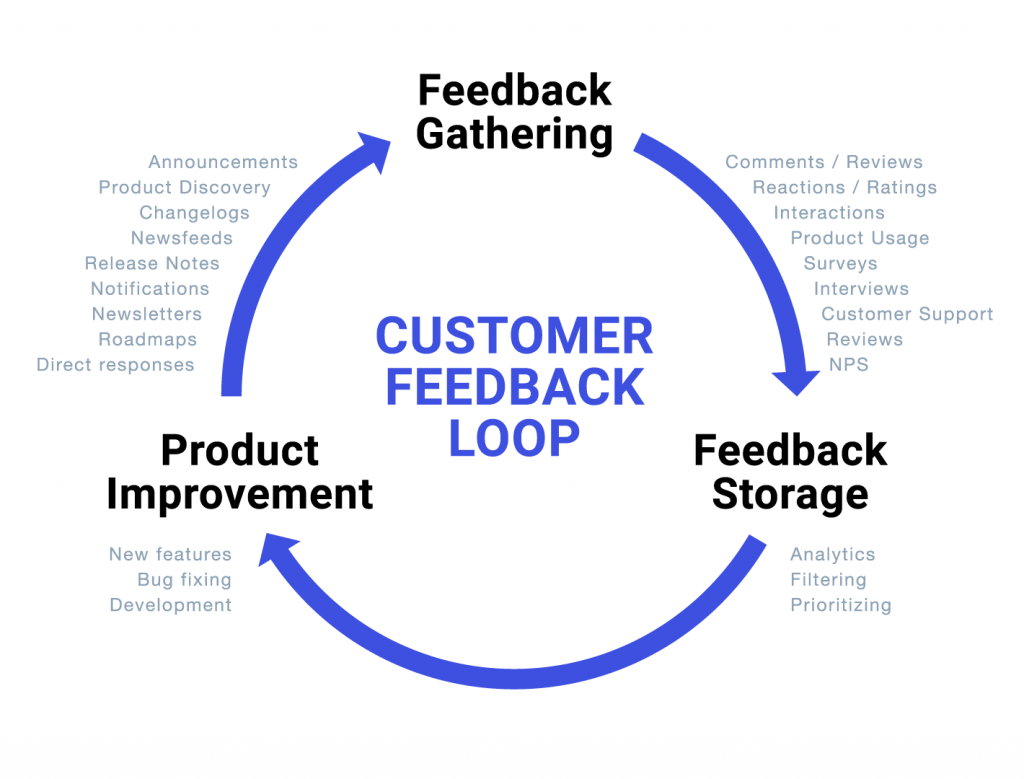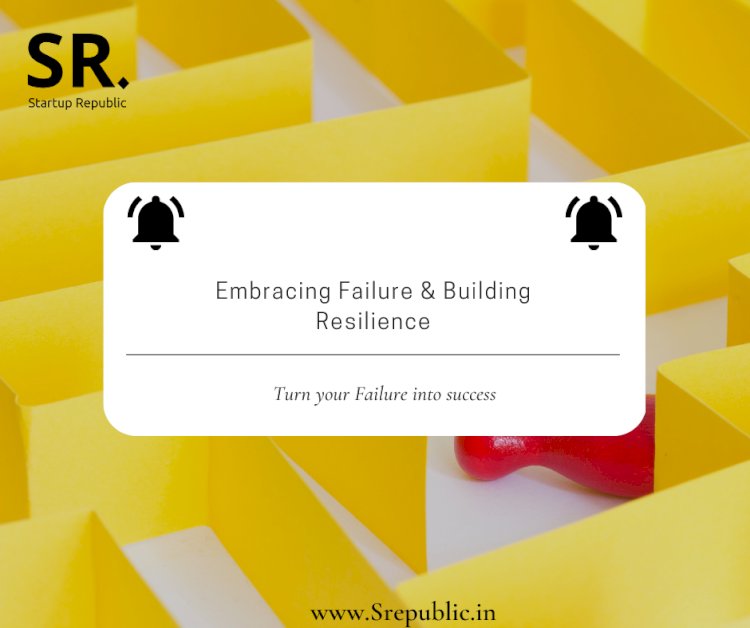
The Indispensable Power of Feedback Loops in Product Development: A Beginner’s Guide
Imagine trying to build a magnificent sandcastle without ever looking at it, or even knowing if the sand is holding up, if your moat is leaking, or if the tide is coming in. You’d likely end up with a messy pile of sand, far from your grand vision.
In the world of product development, building without checking in, without listening, and without adapting is just as risky, if not more so. This is where the magic of feedback loops comes in.
This article will demystify feedback loops, explain why they are not just "nice to have" but absolutely essential, and show you how even a beginner can understand and champion their importance in creating products that truly shine.
What Exactly is a Feedback Loop?
At its heart, a feedback loop is a simple yet powerful concept. Think of it as a continuous cycle of:
- Doing something (Building): You create a part of your product, a new feature, or even just a rough prototype.
- Observing/Listening (Measuring): You then watch how people use it, or you ask them what they think about it.
- Learning/Understanding (Learning): You take all that information and try to understand what went well, what went wrong, and why.
- Adapting/Improving (Iterating): Finally, you use what you’ve learned to make changes and improvements to your product, and then the cycle starts all over again.
Think of it like a GPS:
- Build: You start driving towards your destination.
- Measure: The GPS constantly monitors your current location.
- Learn: It realizes you’ve taken a wrong turn or that there’s traffic ahead.
- Iterate: It recalculates your route, giving you new directions to get back on track or find a better path.
Without this continuous feedback, your GPS would just give you directions once and then leave you to get lost! In product development, feedback loops ensure your product stays on the right path towards meeting user needs and business goals.
Why Are Feedback Loops So Important? The Core Benefits
Now that we understand what a feedback loop is, let’s dive into why they are absolutely critical for product success, especially in today’s fast-paced world.
1. Build What Users Actually Want (Not What You Think They Want)
This is perhaps the most fundamental reason. Without feedback, product teams often rely on assumptions, internal biases, or outdated market research. This can lead to building features that no one uses, or even an entire product that fails to solve a real problem for real people.
- Avoid Guesswork: Feedback provides real-world data and opinions, taking the guesswork out of product decisions.
- Solve Real Problems: By listening to users, you uncover their actual pain points and needs, ensuring your product offers genuine solutions.
- Increase Adoption: Products built with user input are more likely to be embraced and used regularly because they resonate with the target audience.
2. Save Time and Money (Lots of It!)
Imagine spending months, or even years, and millions of dollars building a complex product, only to launch it and find out users hate it or can’t figure out how to use it. That’s a catastrophic waste of resources.
- Early Correction: Feedback loops encourage you to get small pieces of your product into users’ hands early and often. This means you can identify flaws, usability issues, or wrong turns when they are small and easy to fix.
- Reduce Rework: Fixing problems late in the development cycle is exponentially more expensive and time-consuming. Early feedback means less "rework" down the line.
- Optimize Resource Allocation: You can quickly stop investing in features that aren’t working and redirect resources to those that show promise.
3. Improve Product Quality and Usability
Feedback isn’t just about what to build; it’s also about how well you’ve built it. Users are the ultimate testers of your product’s quality and how easy it is to use.
- Identify Bugs and Glitches: Users will often find bugs or unexpected behaviors that internal testing might miss.
- Enhance User Experience (UX): They can pinpoint confusing navigation, unclear instructions, or frustrating workflows, helping you create a smoother, more intuitive experience.
- Refine Features: Feedback helps you fine-tune existing features, making them more robust, efficient, and enjoyable to use.
4. Stay Ahead of the Competition
The market is constantly evolving, and competitors are always trying to innovate. Without feedback loops, your product can quickly become outdated or irrelevant.
- Adapt to Market Changes: Feedback from users and the market helps you understand emerging trends, new demands, and shifts in user behavior.
- Foster Innovation: By continuously listening, you might uncover opportunities for entirely new features or even new products that give you a competitive edge.
- Maintain Relevance: Regular feedback ensures your product remains valuable and appealing in a dynamic marketplace.
5. Increase User Satisfaction and Loyalty
Happy users are loyal users. When users feel heard and see their feedback incorporated into a product, it builds trust and a sense of ownership.
- Build Trust: Users appreciate it when their opinions are valued and acted upon.
- Boost Engagement: A product that evolves based on user needs is more engaging and keeps users coming back.
- Generate Positive Word-of-Mouth: Satisfied users become your best marketers, spreading positive reviews and recommendations.
6. Foster a Culture of Continuous Improvement
Feedback loops aren’t just about the product; they’re about the team and the process. Embracing feedback creates a learning organization.
- Data-Driven Decisions: It encourages teams to base decisions on evidence rather than gut feelings or personal preferences.
- Empowered Teams: Teams feel more confident in their work when they know they have a direct channel to user needs.
- Agile Mindset: Feedback loops are a cornerstone of agile methodologies, promoting flexibility, responsiveness, and ongoing adaptation.
7. Reduce Risk and Uncertainty
Launching a new product or major feature is always a risk. Feedback loops help mitigate that risk significantly.
- Validate Assumptions: You can test your hypotheses about user needs and market demand early on.
- Identify Potential Failures Early: Catching problems before they become critical failures saves your product (and your company) from major setbacks.
- Build Confidence: Knowing you’re building based on real user insights gives the entire team and stakeholders greater confidence in the product’s success.
Types of Feedback and Where to Find Them
Feedback can come from many sources, and each offers unique insights:
-
Direct User/Customer Feedback:
- Surveys: Questionnaires (online, in-app) to gather specific opinions.
- Interviews: One-on-one conversations to deeply understand user experiences and motivations.
- User Testing: Observing users as they try to complete tasks with your product.
- Focus Groups: Discussions with a small group of users to gather collective insights.
- Customer Support Tickets/Calls: Direct reports of bugs, questions, and feature requests.
- Social Media Comments & Reviews: Public opinions and conversations about your product.
-
Indirect User/Customer Feedback:
- Analytics: Data on how users interact with your product (e.g., clicks, time spent on pages, conversion rates, feature usage).
- A/B Testing: Showing different versions of a feature to different users to see which performs better.
-
Internal Team Feedback:
- Sales Team: Insights from potential customers, common objections.
- Marketing Team: Understanding market trends, competitor strategies, and messaging effectiveness.
- Customer Success/Support Team: Front-line knowledge of user pain points and frequently asked questions.
- Engineering Team: Feasibility insights, technical limitations, performance issues.
-
Market and Competitor Feedback:
- Competitor Analysis: Studying what competitors are doing well (or poorly).
- Industry Reports: Understanding broader trends and shifts.
How to Implement Effective Feedback Loops (Even for Beginners)
It might sound complex, but implementing feedback loops doesn’t require a massive budget or an army of experts. Here’s a beginner-friendly approach:
1. Listen Actively and Systematically
Don’t just wait for feedback to come to you; go out and seek it!
- Start Small: If you’re building a new feature, show it to a few potential users or colleagues and ask for their honest opinion.
- Use Simple Tools: Free survey tools (like Google Forms), simple analytics (like Google Analytics), or just scheduling a few casual user interviews can be a great start.
- Monitor Support Channels: Pay attention to what users are asking your customer support team. These are often direct signals of pain points.
- Ask "Why?": When you get feedback, always dig deeper. If someone says, "I don’t like this feature," ask "Why don’t you like it?" or "What were you trying to achieve?"
2. Analyze and Synthesize the Feedback
You’ll quickly find that feedback can be overwhelming or even contradictory. Your job is to make sense of it.
- Look for Patterns: Don’t just focus on individual complaints. Are multiple users reporting the same issue? Is there a common theme in feature requests?
- Categorize Feedback: Group similar pieces of feedback together (e.g., "usability issues," "performance bugs," "new feature ideas").
- Prioritize: You can’t do everything at once. Decide what’s most important based on user impact, business goals, and feasibility. Which problems are causing the most pain for the most users?
3. Communicate Internally
Feedback isn’t just for the product manager. It needs to be shared with the entire team involved in building the product.
- Share Insights: Regularly share key findings from feedback with designers, engineers, marketing, and sales teams.
- Collaborate on Solutions: Involve the team in brainstorming how to address the feedback. This fosters ownership and leads to better solutions.
4. Take Action and Implement Changes
This is where the "loop" truly closes. Feedback is useless if you don’t act on it.
- Make Incremental Changes: You don’t have to overhaul your entire product based on one piece of feedback. Often, small, iterative changes are best.
- Test Your Solutions: Once you’ve made a change based on feedback, test it again with users to see if it actually solved the problem and didn’t introduce new ones.
5. "Close the Loop" with Your Users
This step is often overlooked but is incredibly powerful for building user loyalty.
- Inform Users: If a user submits a bug report or a feature request, let them know when it’s been addressed or if it’s in the works. A simple email saying, "Thanks for your feedback, we’ve fixed X!" goes a long way.
- Show Progress: When you launch a new feature or improvement that was inspired by user feedback, highlight it and acknowledge that it came from listening to them.
6. Make It Continuous, Not a One-Time Event
Feedback loops are not a project that you complete and check off. They are an ongoing process.
- Embed into Workflow: Make feedback gathering and analysis a regular part of your product development cycle.
- Be Patient: Building a great product takes time and many iterations. Don’t get discouraged by negative feedback; see it as an opportunity to improve.
Common Challenges and How to Overcome Them
Even with the best intentions, feedback loops can present challenges.
- Challenge: Too much feedback.
- Solution: Focus on patterns, prioritize based on impact and effort, and don’t try to address every single piece of feedback immediately.
- Challenge: Conflicting feedback.
- Solution: Understand the "why" behind the feedback. Who are these users? Do they represent your core audience? Is there a deeper need that both sides are trying to express? Data (analytics) can help break ties.
- Challenge: Not enough feedback.
- Solution: Be proactive! Reach out to users, offer incentives for participation, make it easy to give feedback, and ensure your communication channels are clear.
- Challenge: Reluctance to act on feedback (internal resistance).
- Solution: Clearly communicate the "why" behind the feedback and the proposed changes. Show the data and the potential impact on users and the business. Involve the team in the solution.
- Challenge: "Analysis Paralysis" (too much time analyzing, not enough acting).
- Solution: Set deadlines for analysis, define clear criteria for decision-making, and remember that perfect information is rarely achievable. Make a decision, implement, and then get more feedback.
Conclusion: The Unsung Hero of Product Success
Feedback loops are the unsung heroes of successful product development. They transform guesswork into informed decisions, save valuable resources, and most importantly, ensure that the products we build truly resonate with and delight the people who use them.
For anyone entering the world of product development, understanding and championing feedback loops is not just a skill – it’s a superpower. By continuously listening, learning, and adapting, you won’t just build products; you’ll build better products, faster, and create a legacy of happy users. So, start listening, start learning, and watch your products thrive!
.png)


Post Comment